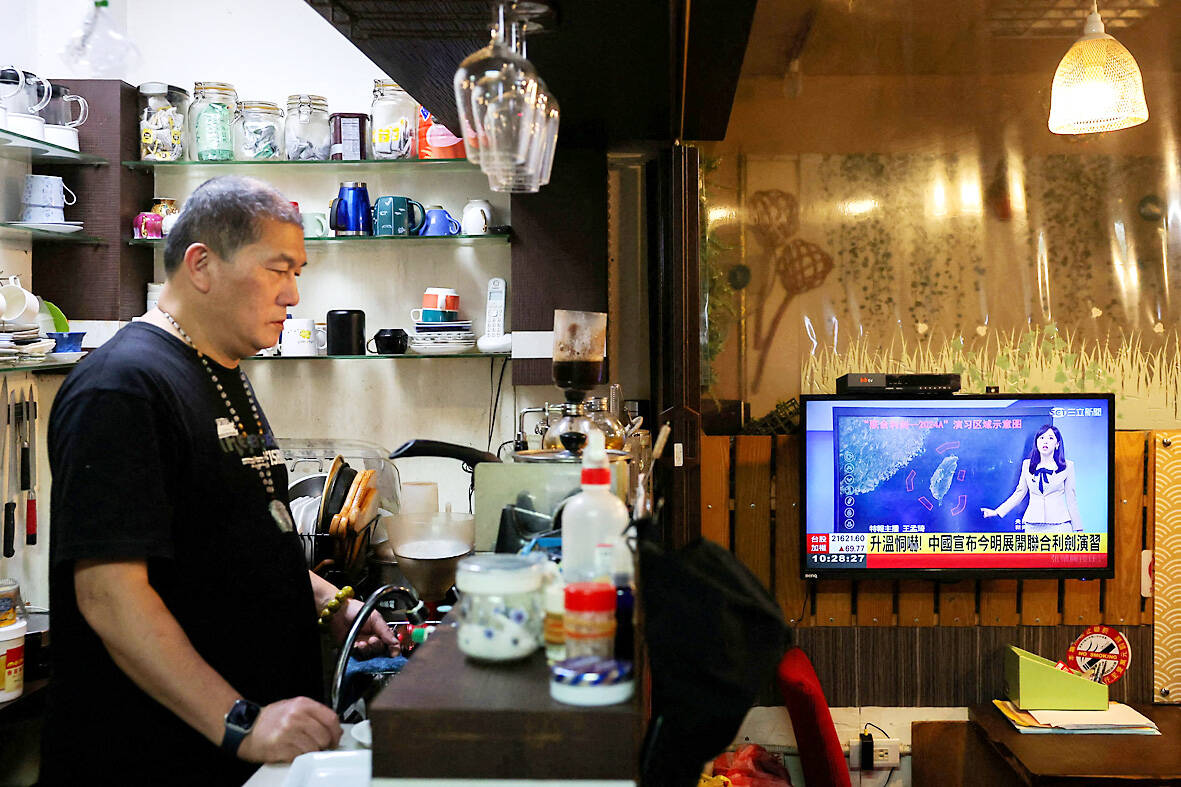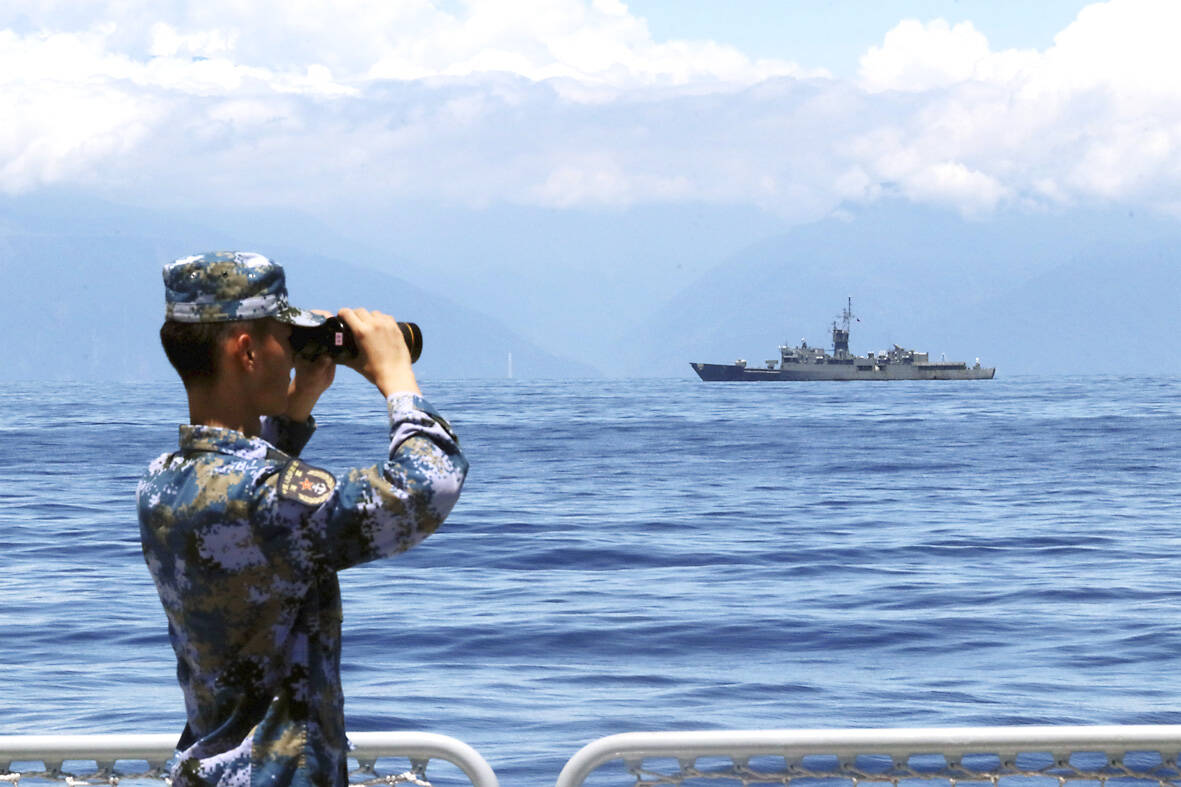Taiwan, once relegated to the backwaters of international news media and viewed as a subset topic of “greater China,” is now a hot topic. Words associated with Taiwan include “invasion,” “contingency” and, on the more cheerful side, “semiconductors” and “tourism.”
It is worth noting that while Taiwanese companies play important roles in the semiconductor industry, there is no such thing as a “Taiwan semiconductor” or a “Taiwan chip.” If crucial suppliers are included, the supply chain is in the thousands and spans the globe. Both of the variants of the so-called “silicon shield” are pure fantasy.
There are four primary drivers for this dramatic upswing in international coverage. Government tourism ad campaigns, increased awareness of Taiwan’s critical role in international trade and supply chains, the mass migration of foreign journalists exiled from China relocating to Taipei and the Chinese Communist Party’s (CCP) increasingly hostile and threatening behavior towards Taiwan, which is the focus of this deep dive.

Photo: Reuters
Much coverage and analysis focuses on the potential for war, much of it sexed up to drive traffic. Though cringe-worthy, much of it does help raise awareness of Taiwan’s situation and — as fellow Taipei Times columnist Michael Turton has frequently pointed out — increased awareness among key countries like the US, Japan and Australia, why Taiwan matters and is worth defending militarily.
WE ARE ALREADY AT WAR
The question of whether the CCP will go to war with Taiwan is both very easy and very difficult to answer. The simplest answer is that we are already at war as far as the CCP is concerned and we should view it in the same light and respond in kind.

Photo: Reuters
The Ministry of State Security (MSS) — Beijing’s intelligence agency — and the United Front Work Department (UFWD) are working all out to subvert, sabotage and destroy from within Taiwan and the entire Western world, with Taiwan being on the front line. Millions of hacking attacks originating in China happen daily, and active and retired military officers are regularly targeted to spy for the CCP — too often successfully.
Temples, pro-unification political parties, gangs and other institutions are recruited to act as a fifth column for the CCP to subvert society from the inside, while students, businesses and even Taiwanese indigenous groups are brought to China on paid-for trips to be inundated with propaganda. Taiwanese businesspeople operating in China are also targets.
Secret Chinese police stations dot the globe, Chinese embassies regularly work to control overseas Chinese organizations and monitor and manipulate Chinese students and, taking advantage of free press laws, seek to buy out or control as much Chinese-language media as possible. Propaganda bots and armies of nationalist “little pinks” are deployed to swamp the Internet with propaganda, while TikTok is weaponized. Chinese hackers even once took over the screens of television monitors in a bunch of 7-Elevens in southern Taiwan and giant screens at train stations to spread propaganda.

Photo: AP
Politicians, academics and officials are often bought off, seduced by attractive lovers or otherwise influenced to serve the CCP’s interests, sometimes unknowingly. There are vast networks of spies, many non-professionals but led by professionals, engaging in espionage of all kinds that includes targets that would not traditionally be targeted by traditional intelligence agencies.
Military and business technological secrets are stolen and weaponized against their creators. Crucial elements of the world’s supply chain — such as rare earths and certain drug precursor chemicals — are gobbled up and dominated by China, which has already weaponized rare earths against Japan. Even massive oversupply of key industrial products, which previously included steel and solar panels but now include new fields such as electric vehicles, is weaponized by providing massive subsidies to make other countries’ industries no longer competitive, thereby destroying those industries overseas, and creating massive economic dislocation and unemployment.
A new Kiel Institute report estimates that direct — which does not include the myriad indirect — subsidies to favored industries in China was 3.5 percent of GDP, or three to nine times higher than other major industrial nations. Because GDP figures are known to be inflated in China and with indirect subsidies and the costs of stealing foreign intellectual property added in the real percentage is significantly higher.
FBI Director Christopher Wray told the Senate Intelligence Committee in 2021 that they open new counter-espionage cases against Chinese operations on average every 10 hours.
SCARY WEAPONS BEING FIRED?
When most people think of war, they are thinking of kinetic warfare, which is when large numbers of weapons are fired at people to kill them in massive numbers. The CCP is deploying large numbers of weapons and firing them, just not yet at people, which is referred to as gray zone warfare.
In August of 2022, Beijing dramatically changed the status quo across the Taiwan Strait by conducting large-scale live-fire military exercises in zones inside Taiwan’s Air Defense Identification Zone (ADIZ) to simulate a blockade. Missiles were also fired over Taiwan, though they did not impede on Taiwan’s legal air space because they were above the Karman line, which technically meant they were in space. Five missiles ultimately landed in Japan’s Exclusive Economic Zone (EEZ).
Did the missiles land in Japan’s EEZ intentionally, or is the People’s Liberation Army Rocket Force (PLARF) incompetent? They landed to the southwest of Okinawa’s Hateruma Island, which is not currently claimed by China, though nationalists in China have long agitated for it to be “reclaimed” or returned to the Ryukyu Kingdom’s tributary status to the Chinese empire.
Chinese weapons are not known for their quality, and recently the top leadership of the PLARF has been removed. Reasons for the house cleaning include corruption that could have compromised missile quality, spying for the US, disloyalty to Chinese leader Xi Jinping (習近平) or some combination of the three. That all five landed in the same area suggests that this was intentional, but incompetence can never be ruled out.
The CCP claimed the exercises were in response to then US speaker of the house Nancy Pelosi’s visit to Taiwan. In reality, the complexity of the exercises meant that they had to have been planned on a timeline of months, if not years.
In other words, these exercises were going to be held regardless. Pelosi’s visit just happened to be their best opportunity to try and claim that they had to do it because Pelosi’s “provocative” trip forced their hand. If she had not visited, the CCP would have waited for another similar “opportunity.”
Alarmingly, many journalists and analysts still parrot Beijing’s propaganda and tie these exercises to Pelosi, implying somehow she is at fault.
Since August 2022, the CCP has regularly conducted drills and there are almost daily incursions into Taiwan’s ADIZ. Beijing claims the entire Taiwan Strait as their territorial waters, giving their coast guard increased authority to engage in armed action on their own. Since earlier this year, it has increasingly been taking aggressive actions near the Kinmen and Matsu Island groups.
The Davis Line, or median line, in the Taiwan Strait that from the 1950s to 2022 was considered a “do not cross” line by both sides has been obliterated by the Chinese side. All these actions are significant changes to the status quo by the CCP.
These gray zone actions are to train their military for war in waters that would be theaters of operations in an invasion, or in key zones if they wanted to go with the blockade option. They are also intended as psychological warfare against Taiwan’s air force, exhausting their personnel and wearing out Taiwan’s planes and requiring expensive maintenance, while also testing the Taiwanese air force capabilities.
These actions are also intended as psychological warfare against Taiwan’s public and politicians by maintaining a constant sense of threat, which they hope will push voters to vote for the Chinese Nationalist Party (KMT). There are some indications that they had some success, at least in the legislature, in this year’s elections and that some voters responded to the KMT’s “deterrence plus dialogue” messaging.
ASYMMETRICAL WARFARE
The attacks by the CCP are just some ways that they are waging war, but reading over this list there is no doubt that the CCP is engaging in a “whole-of-society” asymmetrical war with Taiwan and internationally, or what two senior Chinese air force officers dubbed in the title of their book “unrestricted warfare.” This “unrestricted warfare” is most advanced within Taiwan.
Some have declared this era is a “New Cold War.” A “Sapping War” with both sides actively working to undermine the other side seems a more fitting name. In an upcoming column we will look at when or why Xi might turn this war into a kinetic war.
Donovan’s Deep Dives is a regular column by Courtney Donovan Smith (石東文) who writes in-depth analysis on everything about Taiwan’s political scene and geopolitics. Donovan is also the central Taiwan correspondent at ICRT FM100 Radio News, co-publisher of Compass Magazine, co-founder Taiwan Report (report.tw) and former chair of the Taichung American Chamber of Commerce. Follow him on X: @donovan_smith.

This month the government ordered a one-year block of Xiaohongshu (小紅書) or Rednote, a Chinese social media platform with more than 3 million users in Taiwan. The government pointed to widespread fraud activity on the platform, along with cybersecurity failures. Officials said that they had reached out to the company and asked it to change. However, they received no response. The pro-China parties, the Chinese Nationalist Party (KMT) and Taiwan People’s Party (TPP), immediately swung into action, denouncing the ban as an attack on free speech. This “free speech” claim was then echoed by the People’s Republic of China (PRC),

Exceptions to the rule are sometimes revealing. For a brief few years, there was an emerging ideological split between the Democratic Progressive Party (DPP) and Chinese Nationalist Party (KMT) that appeared to be pushing the DPP in a direction that would be considered more liberal, and the KMT more conservative. In the previous column, “The KMT-DPP’s bureaucrat-led developmental state” (Dec. 11, page 12), we examined how Taiwan’s democratic system developed, and how both the two main parties largely accepted a similar consensus on how Taiwan should be run domestically and did not split along the left-right lines more familiar in

Many people in Taiwan first learned about universal basic income (UBI) — the idea that the government should provide regular, no-strings-attached payments to each citizen — in 2019. While seeking the Democratic nomination for the 2020 US presidential election, Andrew Yang, a politician of Taiwanese descent, said that, if elected, he’d institute a UBI of US$1,000 per month to “get the economic boot off of people’s throats, allowing them to lift their heads up, breathe, and get excited for the future.” His campaign petered out, but the concept of UBI hasn’t gone away. Throughout the industrialized world, there are fears that

Most heroes are remembered for the battles they fought. Taiwan’s Black Bat Squadron is remembered for flying into Chinese airspace 838 times between 1953 and 1967, and for the 148 men whose sacrifice bought the intelligence that kept Taiwan secure. Two-thirds of the squadron died carrying out missions most people wouldn’t learn about for another 40 years. The squadron lost 15 aircraft and 148 crew members over those 14 years, making it the deadliest unit in Taiwan’s military history by casualty rate. They flew at night, often at low altitudes, straight into some of the most heavily defended airspace in Asia.